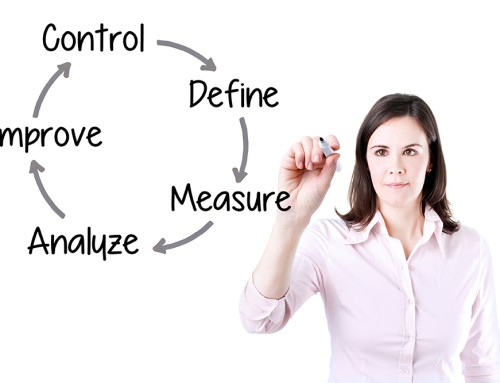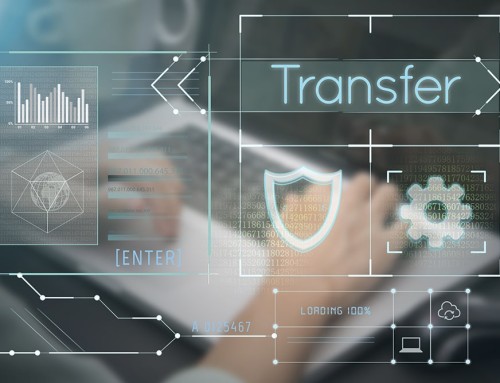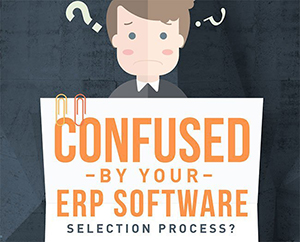ERP and eCommerce
How to make it the perfect partnership
There are three broad categories of e-commerce solutions to consider…
- Template solutions – a pre-designed template with a pre-built shopping cart and catalog. Examples of these include WooCommerce, Shopify, Neto or Magento
- Bespoke/custom solutions – designed to specific requirements. Usually, a customer-specific solution will require more time to develop but gives a more tailored fit to specific e-commerce requirements
- Vendor-delivered solutions – delivered as part of the ERP solution or as an additional module that can be provisioned with pre-defined integration points

Our experience based on working with many businesses that have gone down these different paths is that choice of solution is usually influenced by a number of core factors (these aren’t in any particular order):
- Budget
- Functional requirements driven by business processes
- What percentage of revenue will come from e-commerce/web vs traditional business?
- How competitive your online marketplace is
- The products that you plan to sell on-line
- Target Market: B2B vs B2C business model – are you selling to consumers or to business customers
You should consider each of these areas and don’t forget that our business analysts are available to discuss how this might look for your particular scenario – give our team a call at 1300 045 046 to schedule a chat.
Website Design: Template or Custom Build?
Building Your ERP Integration Roadmap
Your question about integration to the back-end ERP solution from e-commerce will depend largely upon the choice of an e-commerce platform.
It is highly likely that the more tailored your e-commerce solution the more work will need to be done on the integration to your ERP solution.
Functional questions to be asked include:
- Will you require customer-specific pricing?
- Will you want to display stock levels on your e-commerce site?
- Will images and product descriptions reside in your ERP solution or e-commerce solution?
- Will orders from the e-commerce site automatically create orders/pick lists in your ERP solution?
- Do you allow account customers or COD-only type transactions?
- Which payment gateways will you use?
- Will you accept back orders?
This is just a tiny cross-section of the questions you’ll need to answer as part of your project, but don’t forget that help is available for you by contacting the Leverage team.
PS As a special bonus, here’s a link to a great additional blog from Hubspot on the topic of designing your eCommerce Website that I found helpful – maybe you will too!
Critical Success Factors: The Scope of your project
What about the connection process between your ERP solution and your e-commerce platform?
eCommerce provides a front-end/customer gateway to browse your online store, check stock availability, place an order and pay for that order.
Sounds simple…….right?
The challenge is that there are lots of moving parts to check stock availability, order information, picking and shipping.

Now you have two choices – leave e-commerce and ERP as two separate solutions or integrate.
If you do not integrate your ERP and E-commerce solutions you will need to manually key orders into your ERP system and will need to manually update pricing and stock availability into the website so it’s worth giving the integration topic serious thought.
Here are just a few of the potential integration points between e-commerce and ERP to consider when planning your process flows:
- Customer Account Management
- AR Invoices, AR statements
- Payment
- Warehouse picking, packing and delivery
- Inventory items – including stock descriptions and images
- Inventory levels – stock availability/back ordering
- Pricing
- Payment processing and reconciliation
A scope of work which clearly defines your requirements from the e-commerce solution should also include the scope of work for the integration points to and from your ERP solution.
Is eCommerce on your radar?
Businesses that are interested in an e-commerce solution generally fall into three different categories that aren’t necessarily tied to the size of the organisation:
- you have an existing, traditional (bricks and mortar) business and you want to open up additional channels to market through an online business
- your entire business model is e-commerce / web-based
- you want to allow existing customers access to an e-commerce platform/customer portal to review order, account and statement details
However the size of your business, existing business model, budget and your route to market (B2B or B2C) will often dictate the type of e-commerce solution that is appropriate (and affordable) for your business.
One thing is consistent though and that is that every business has an ERP or accounting solution at the back office that collects the transactions and manages the inventory – integrating the front-end eCommerce and the back office ERP can drive significant benefits for the business if done right.
That’s what we’d like to cover in this blog and provide some guidance on the key areas to consider.








Leave A Comment